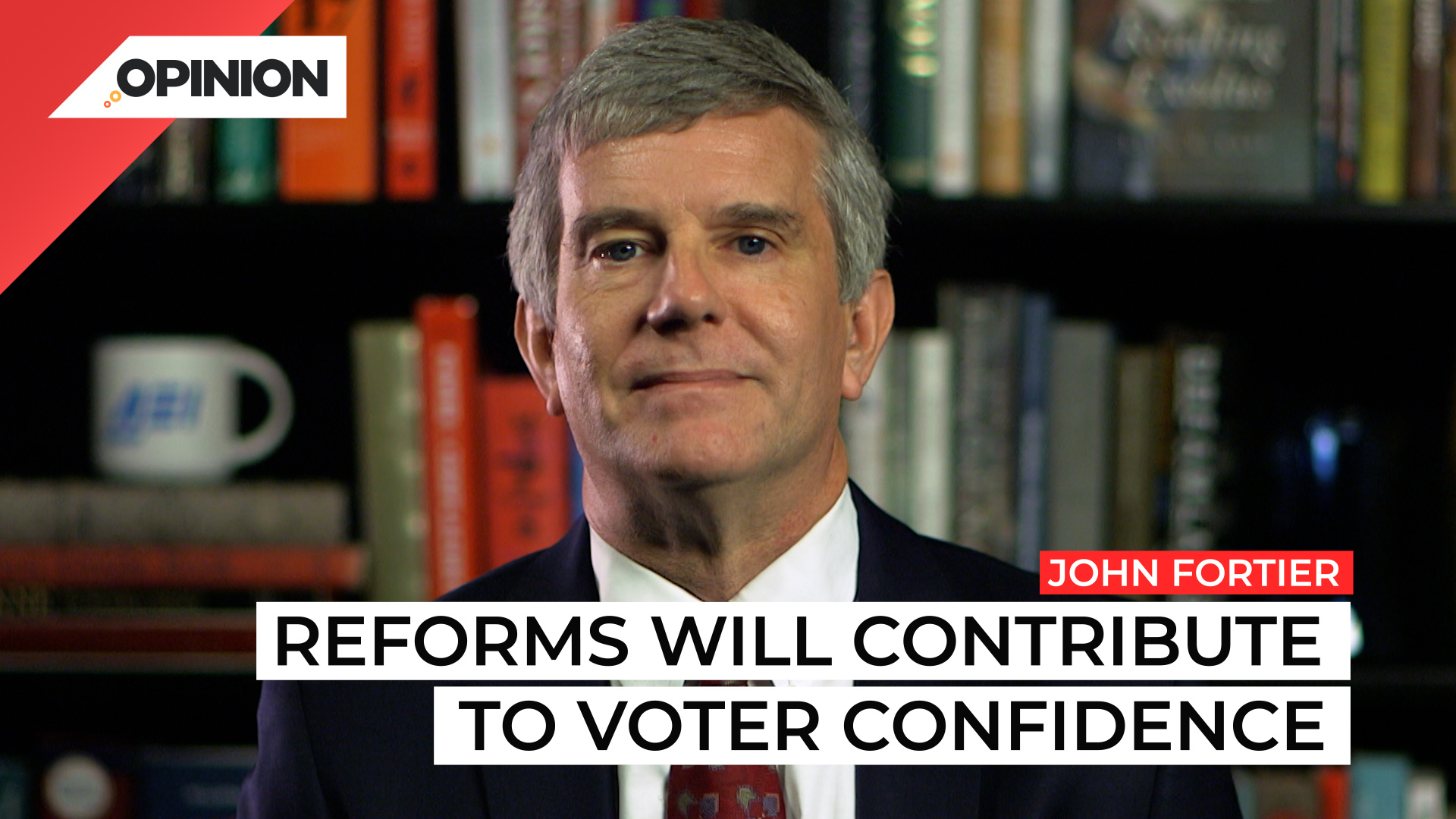
Commentary
-
Our commentary partners will help you reach your own conclusions on complex topics.
What should we make of the 2020 election? What does it tell us about improving the way we run elections in the future? First, we ran the 2020 election under adverse conditions.
A pandemic hit. It arrived without warning, during primary season. And we made major changes in the way we vote.
One example: voting by mail exploded to over 45% of votes cast, early voting in person increased, and election day voting plummeted.
Despite all of these changes, we had the highest voter turnout by far in modern history. Nearly 160 million voters and 67% of eligible voters.
So whatever you think about the election outcome or specific election controversies, running an election during a pandemic and processing the largest number of votes ever cast, is an accomplishment. Were there problems and controversies? Of course.
And some of the divisions between the two political parties as to how we should vote were exacerbated. For example, Democrats became much more favorable towards voting by mail and Republicans more skeptical.
The greatest controversies arose in states with divided leadership where political actors from opposing parties clashed, and often the emergency changes to voting left one party or the other feeling unhappy with the changes made.
Looking forward to an election run under more normal circumstances, what are the important lessons for how we vote in the future?
States are still the key place for running elections and states will continue to have different forms of voting (and that includes states having very different mixes of voting by mail, early voting and election day voting).
This means the real debate about how we vote will happen in the states, not in Washington.
One of the mistakes that Democrats made after the election was pushing an enormous package of national reforms.
We do have some national laws on elections, but they have been passed by big majorities and with strong bipartisan support.
The federal Democratic reform bill pushed with only Democratic support and narrow majorities was destined to fail.
The debate over these issues will really continue in the states, not at the federal level.
What are the big features of voting that states should work to improve?
Voter registration.
Even after years of improvement, voter lists don’t include all eligible voters, and they are not as clean and up to date as they should be.
We should improve the process for voters to register, especially at DMVs, to ensure that eligible voters get registered in the normal flow of their visit to the DMV, that they can update their information and that we can take voters off of lists where they no longer live.
We have some tools to compare registration lists with other states, but more sharing of data across states would improve the quality of lists.
Another area is the polling place. The polling place is not dead, so improve the experience at the polling place.
There has been a long-term trend to more voting by mail and an even more dramatic increase in the last election.
But voting at polling places, either before or on election day, is not dead. Polling places provide privacy and other voter protections and are convenient for many voters. All states, but especially those that are not moving to extensive voting by mail, have an interest in improving the voting experience for in-person voters.
Another area is to counting Votes Accurately, Transparently and Quickly.
Votes are counted more slowly than they were twenty five years ago.
The slowing is related to the number of votes cast by mail cast, but even more importantly, by the policies around voting by mail.–
Three key reforms are:
- An earlier processing of mail ballots
- Requiring that ballots be submitted by election day, not mailed by that date.
- Ensuring transparency in the counting process
These reforms will not wipe away all doubts about election results, but they will contribute to voter confidence in the election outcome.
-
Congress will not just play dead against Trump, DOGE
Less than one month into President Donald Trump’s second term in office, top officials, judges and legal experts are already warning that the returning president is causing a serious constitutional crisis. Specifically, they say that President Trump is usurping the powers of the legislative and judicial branches of government, effectively seeking to establish a new… -
Trump’s second term heralds changes for US social media
Elon Musk, the world’s richest man and owner of the social media platform X, contributed over $277 million to help President Donald Trump win the November 2024 elections. Mark Zuckerberg, owner of Meta, has also cozied up to the new president, contributing to his inauguration fund, resolving a legal dispute with Trump and announcing a… -
Musk-Ramaswamy DOGE initiative overdue and full of challenges
After winning the U.S. presidential election, Donald Trump announced his plans for a proposed presidential advisory commission he calls the Department of Government Efficiency (DOGE). Headed by Elon Musk and Vivek Ramaswamy, DOGE’s mission would be to trim government budgets, reduce regulations and shrink the federal workforce. Many Republicans view the initiative as overdue, while… -
This is the dawn of a new national Republican coalition
Republicans have won full control of both Congress and the White House. Donald Trump will return to Washington, D.C., as the first Republican president since 2004 to have won the national popular vote, ironically by almost the same margin that Hillary Clinton beat him by in 2016. These GOP victories relied on high pro-Trump voter… -
Why are transitions of power so complicated in the United States?
The American political tradition of a long and complicated transition of power, lasting from November to January, is an enigma in the world today, especially when compared to the many nations where transitions of power take place immediately or in less than 24 hours. Yet even after a new administration takes power in the United…
Latest Opinions
-
 Reuters
Reuters
Trump returns to CPAC, criticizes Biden and comments on Ukraine deal
-
 AP Images
AP Images
Trump’s Department of Justice removes database tracking police misconduct
-
 Getty Images
Getty Images
DOE to investigate Maine Education Department over trans athletes, Title IX
-
 Reuters
Reuters
New coronavirus discovered in bats similar to COVID-19
-
 AP Images
AP Images
Pope Francis in critical condition with asthma-like respiratory crisis
Popular Opinions
-
In addition to the facts, we believe it’s vital to hear perspectives from all sides of the political spectrum.






